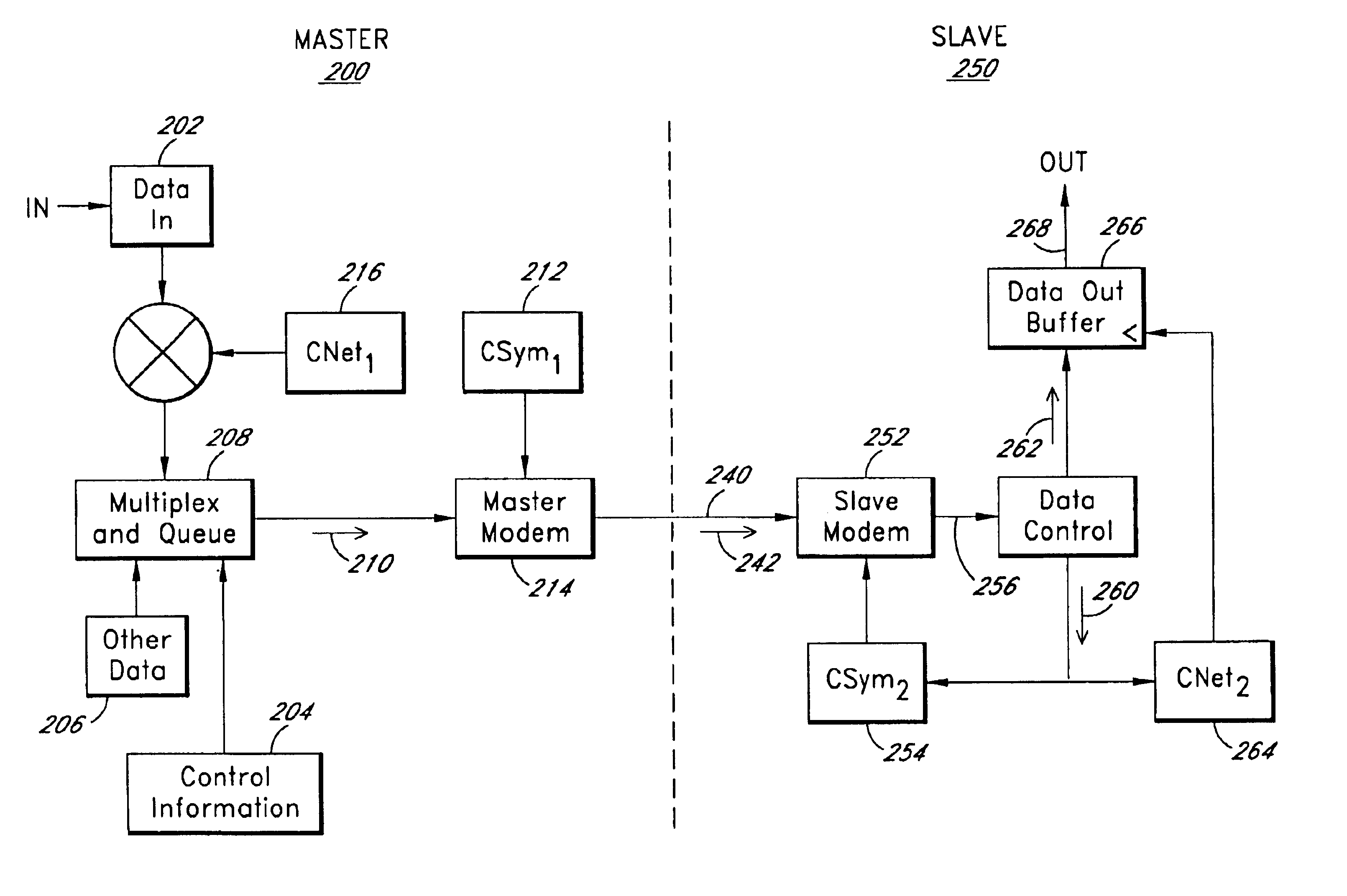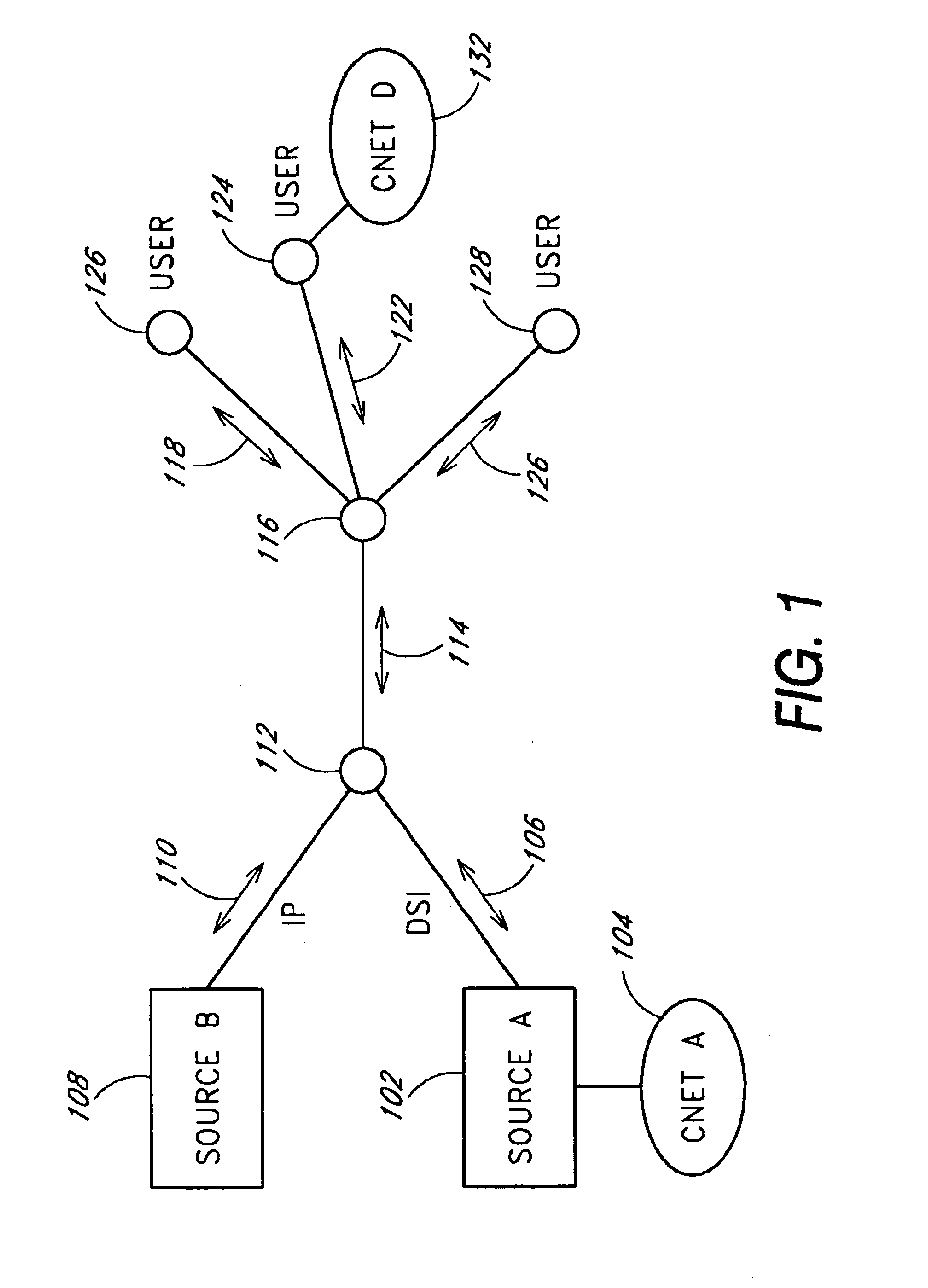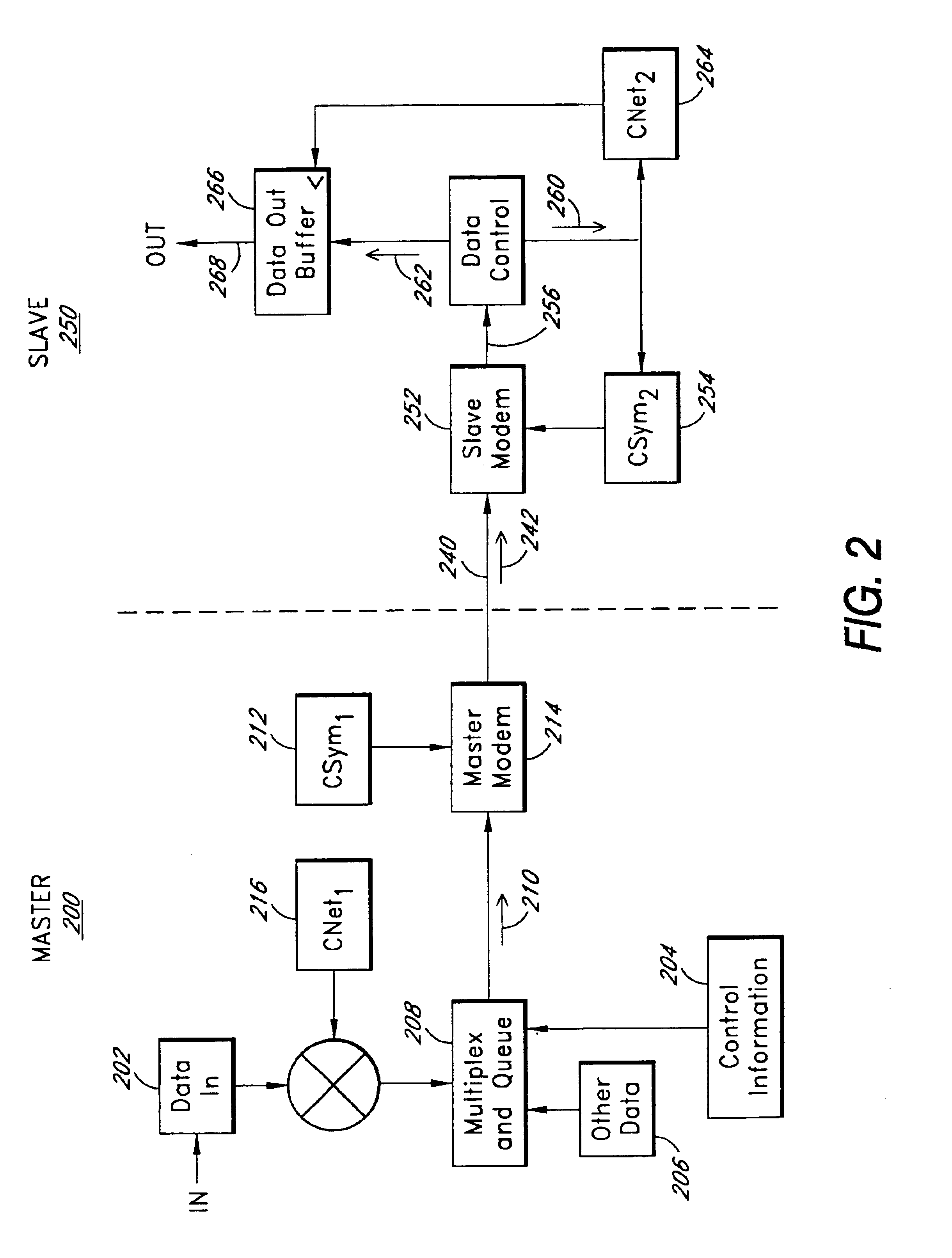Synchronizing clocks across a communication link
a technology of communication link and synchronization clock, which is applied in the direction of network traffic/resource management, wireless commuication services, and assessing restrictions, etc., can solve the problem of not having direct access to the side of the link, and achieve the effect of more accurate and/or faster data transfer
- Summary
- Abstract
- Description
- Claims
- Application Information
AI Technical Summary
Benefits of technology
Problems solved by technology
Method used
Image
Examples
Embodiment Construction
1. Data Links and Network Clocks
[0032]Data typically travels through a network in packets, from node to node across links. A data source can be identified, though not necessarily the original source, which determines the rate at which the data is received. Referring to FIG. 1, a SourceA 102 provides data 106 to the network 130. Data 106 includes some fixed-rate data streams, such as a DS1 (also called T1) telephony connection. A network clock 104, CNetA which is local to SourceA, determines the precise rate at which such data is provided into the network 130. A SourceB 108 represents a source of data 110 which is not necessarily supplied at a fixed rate, and may include for example Internet Protocol (IP) packets. The data from these sources is merged at node 112. Node 112 may be a switch which reformats the incoming data into a format such as ATM cells. In any event, the combined data 114 is then transferred to another node 116, from whence the data is distributed appropriately to u...
PUM
 Login to View More
Login to View More Abstract
Description
Claims
Application Information
 Login to View More
Login to View More - R&D
- Intellectual Property
- Life Sciences
- Materials
- Tech Scout
- Unparalleled Data Quality
- Higher Quality Content
- 60% Fewer Hallucinations
Browse by: Latest US Patents, China's latest patents, Technical Efficacy Thesaurus, Application Domain, Technology Topic, Popular Technical Reports.
© 2025 PatSnap. All rights reserved.Legal|Privacy policy|Modern Slavery Act Transparency Statement|Sitemap|About US| Contact US: help@patsnap.com



